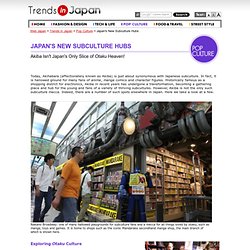

Noviembre, el mes del Shichi-go-san. El día 15 de noviembre tiene lugar una de las festividades más importantes para los japoneses, el Shichi-go-san , un ritual de paso para los niños en el que se pide a los dioses sintoístas por el bienestar futuro de estos.

Según el antiguo calendario japonés, el mes de noviembre recibía el nombre de shimotsuki , el “mes de la escarcha”, en referencia a que es en este mes cuando se producen las primeras heladas. Kagurazuki , el mes del kagura (un tipo de música y danza sintoísta), c hūtō , el “mes central del invierno” y yukimachizuki , el “mes que espera la nieve”. Shichi-go-san significa, literalmente, “siete-cinco-tres”, y hace referencia a que en esta celebración participan los niños de tres y cinco años, y las niñas de tres y siete años ya que los japoneses consideran los números impares como más auspiciosos. En esta celebración los niños visten por primera vez a la manera tradicional japonesa, con preciosos kimonos para las niñas y chaquetas haori y pantalones hakama chitoseame chitose Niiname . Kimono Rental Fitting Services - KIMONO de GO London. “SHICHIGOSAN” is celebrated on the 15th of November every year in most regions of Japan.

By Edo-era (1603-1868), most people practiced “Shichigosan”.It is believed that November the 15th was chosen for this celebration because it was considered the most auspicious day of the year, according to the traditional Japanese calendar. There are various theories on why it falls on November the 15th – some say that adding 3, 5 and 7 makes 15, some say it is because the famous Edo era Shogun Tokugawa’s son was born on November the 15th. Whatever the theory and whatever the era, through “Shichigosan” rituals, parents offered gratitude for their children’s healthy growth, safety and prayed for their future happiness. Following the visits to the local shrine, parents generally buy “Chitose-ame” (Chitose = thousand years) – Longevity candy. Long candies in bags which are decorated with turtles and cranes are given to the children.
Noviembre, el mes del Shichi-go-san. The otaku mainstream flows down Chuo-dori. Japan's New Subculture Hubs. Akiba Isn't Japan's Only Slice of Otaku Heaven!

Today, Akihabara (affectionately known as Akiba) is just about synonymous with Japanese subculture. In fact, it is hallowed ground for many fans of anime, manga comics and character figures. Historically famous as a shopping district for electronics, Akiba in recent years has undergone a transformation, becoming a gathering place and hub for the young and fans of a variety of thriving subcultures. However, Akiba is not the only such subculture mecca.
Indeed, there are a number of such spots elsewhere in Japan. Nakano Broadway: one of many hallowed playgrounds for subculture fans and a mecca for all things loved by otaku, such as manga, toys and games. Displays of toy heroes from the past stop many shoppers in their tracks. Exploring Otaku CultureOne magnet for fans of many genres of Japanese subculture is conveniently located no more than a five-minute train ride from Shinjuku, one of Tokyo’s busiest areas. Visit Japan with Tokyo Otaku Mode. Tokyo Travel: Akihabara. Akihabara (秋葉原), also called Akiba after a former local shrine, is a district in central Tokyo that is famous for its many electronics shops.

In more recent years, Akihabara has gained recognition as the center of Japan's otaku (diehard fan) culture, and many shops and establishments devoted to anime and manga are now dispersed among the electronic stores in the district. On Sundays, Chuo Dori, the main street through the district, is closed to car traffic from 13:00 to 18:00 (until 17:00 from October through March). Akihabara has been undergoing major redevelopment over the years, including the renovation and expansion of Akihabara Station and the construction of new buildings in its proximity. Among these newly opened buildings were a huge Yodobashi electronics store and the Akihabara Crossfield, a business complex with the aim of promoting Akihabara as a center for global electronics technology and trade. Side streets lined by electronics shops and maid cafes Electronics Otaku Goods.
Pop Culture - Official Tourism Guide for Japan Travel. Japan's New Subculture Hubs. Maid Cafe Maidreamin. Pop Culture - Official Tourism Guide for Japan Travel.